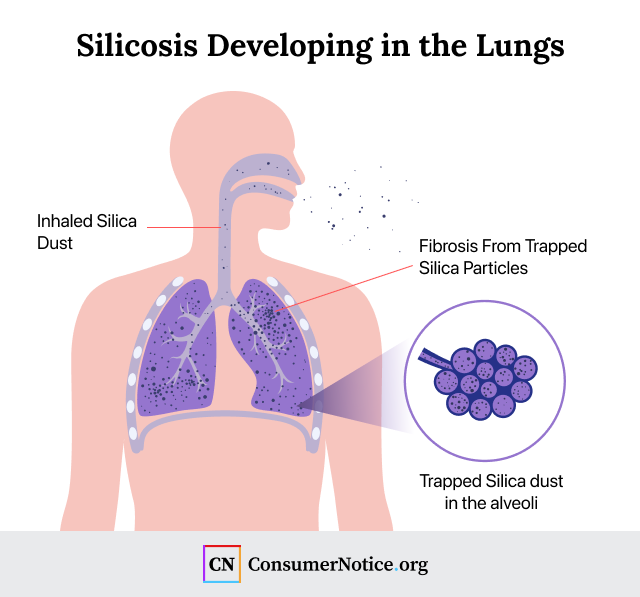
The danger of Silica Dust
Are you keeping your studio safe from Silica dust? Silica is a mineral found in many common products. Fine silica dust can penetrate deep into the lungs. Prolonged silica dust exposure can contribute to serious health complications, including COPD, emphysema, lung cancer and silicosis.
Silica dust contains fine particles that form during mechanical alteration to silica-containing materials, such as concrete, bricks, tiles, quartz and other stones. There are two types of silica: amorphous and crystalline. Medical experts and health officials have identified the dust from crystalline silica as hazardous. It is a known human carcinogen and is also associated with several serious health conditions.
A few reports suggest that amorphous silica can cause respiratory diseases (but not silicosis) in workers. Studies in lab animals suggest that although breathing amorphous silica can cause lung inflammation and injury, it is less hazardous than crystalline silica.
Silica Dust Facts
- Silica is one of the most abundant naturally occurring minerals in the world.
- Amorphous and crystalline are the two types of silica.
- Dust produced by mechanical action on silica-containing materials is a known health hazard.
Quartz is the most common form of respirable crystalline silica. It is in numerous everyday products, including art clays and glazes, caulk, cleansers, cosmetics, paint, pet litter and talcum powder. When inhaled, dust particles settle deep in the lungs. This can contribute to elevated rates of lung cancer, particularly among individuals with consistent occupational or environmental exposure to silica dust.
Silica Dust Exposure Risks
Occupational exposure is the greatest risk factor for silica dust-related health conditions. Workers in certain industries face a greater risk of silica dust exposure than others. For example, because cutting or sanding common construction materials produces silica dust, bricklayers, stone masons and construction workers are at increased risk of exposure. Workers in oil and gas extraction, mining and countertop fabrication and installation may also inhale large qualities of silica dust daily.
There is also a risk of secondary exposure to potentially harmful silica dust. Workers who bring the minute particles home on clothing and gear may inadvertently spread them throughout the home. Family members and friends who breathe in these particles may develop complications from silica dust exposure.
Occupational and environmental exposure to silica dust is a known risk in several common occupations. According to the U.S. Department of Labor, approximately 2.3 million people face regular workplace exposure to the mineral. Employers must take steps to reduce silica dust exposure. Occupational Safety and Health Administration regulations outline proper precautions.
What Products Contain Silica Dust?
Silica is a mineral that forms within the Earth’s crust that is used to manufacture commonly used products such as clay, granite, glass and concrete. It appears as silicon dioxide in numerous natural materials, with quartz and feldspar being the most significant silica-containing minerals.
Products Containing Silica
- Ceramics
- Clay
- Glaze making materials
- Cleansers and other skin care products
- Concrete
- Construction materials
- Bricks
- Glass
- Granite
- Plaster
- Quartz
- Rocks
- Sand
- Soil
- Talcum powder
Because of its ubiquitous nature, most people have some level of silica dust exposure in the natural course of daily life. However, these levels are rarely harmful. Repeated exposure over years, such as in occupations involving constructing with silica material or manufacturing secondary products with silicon dioxide, can lead to overexposure.
Staying Safe from Silica Dust is incredibly important, especially for home studios or if you are working with clay every day. Read more about Silica Dust fon the Consumer Notice website.

